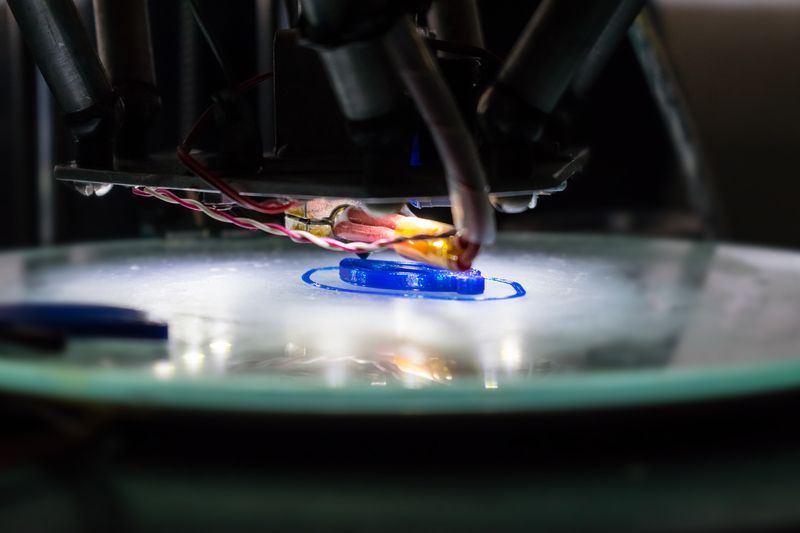3D Printing: Transforming Modern Dentistry with Precision and Speed

The world of dentistry is undergoing a technological revolution, all thanks to the advancement of 3D printing. Once a field dependent on manual craftsmanship for creating dental solutions, the introduction of 3D printing has brought about an era where precision, speed, and customization are the new standards. This groundbreaking technology is enhancing every aspect of dental practice, from crafting flawless dental implants to producing crowns that fit perfectly at the first fitting, and even fabricating complete dentures efficiently. The impact of 3D printing in dentistry is not a subtle shift but a monumental leap forward, dramatically improving patient outcomes and experiences.
A New Era of Dental Implants
Dental implants require a high degree of accuracy to ensure they fit the patient correctly and function as intended. 3D printing technology excels in this area by producing implants with precision unmatched by traditional methods. Custom implants are designed using a digital workflow, starting with a 3D scan of the patient's mouth, then creating a model that perfectly mimics the anatomical structure required. The result is a more comfortable fit, improved functionality, and a quicker turnaround time from design to implementation.
Revolutionizing Crowns and Bridges
The production of crowns and bridges is one of the areas in dentistry where 3D printing shines the most. The traditional process can be lengthy and involves multiple visits to the dentist. With 3D printing, however, the entire process is streamlined. Dentists can scan a patient's tooth and then print a perfectly fitting crown or bridge on-site, often within a single visit. This not only saves time but also reduces the discomfort associated with temporary fittings and multiple adjustments.
Dentures in a Day – The Power of Rapid Prototyping
Creating dentures has historically been a lengthy process that could take several weeks, requiring multiple patient visits. 3D printing has transformed this process by enabling rapid prototyping. With the digital design and quick fabrication capabilities of 3D printers, it is now possible to design and create a set of dentures within a single day. This rapid production does not compromise the quality or comfort of the dentures, making them a viable and efficient option for patients needing them.
Personalized Care Through Customization
One of the greatest advantages of 3D printing in dentistry is the ability to offer personalized care tailored to the specific needs of each patient. Whether it's aligners, night guards, or surgical guides, each device is custom-made to fit the unique contours of the patient's mouth. This customization ensures that the treatments are not only more effective but also more comfortable for the patient, leading to better compliance and outcomes.
The Advent of Bioprinting in Dentistry
The realm of bioprinting, where 3D printing techniques are used to produce tissue-like structures, is on the horizon for dentistry. While still in the early stages of development, the potential for bioprinting to create gum tissue or bone for use in dental surgeries holds promise for future applications. This could streamline complex procedures, such as bone grafting, and offer new solutions for periodontal disease and tooth loss.
Enhancing Orthodontic Solutions
Orthodontics has also embraced 3D printing for the creation of clear aligners, retainers, and other orthodontic appliances. These items are printed to exact specifications for an individual's orthodontic treatment plan, leading to more effective and efficient results. The technology also enables orthodontists to easily produce replacements for lost or damaged appliances, minimizing treatment disruptions.
In-Office Printing for Immediate Results
The integration of 3D printing technology into dental practices is transforming the patient experience by reducing wait times. In-office printing means that many dental devices can be produced while the patient waits, eliminating the need for multiple appointments and prolonged treatments. This capability not only enhances patient satisfaction but also optimizes the operation of the dental practice.
The Impact on Dental Laboratories
3D printing is also reshaping the dental laboratory industry. Traditional methods of mold making and casting are being supplemented or replaced by digital processes. Laboratories equipped with 3D printers are capable of producing more restorations in less time, boosting productivity and allowing for increased focus on complex cases where manual expertise is still paramount.
Training the Next Generation of Dentists
Dental education institutions are incorporating 3D printing into their curricula to prepare the next generation of dentists for a digital future. Students learn to design and fabricate dental devices, gaining skills that will be essential in their future practices. As they become adept at operating within digital workflows, they are better equipped to leverage the benefits of 3D printing for their patients.
3D printing is carving a new landscape in dentistry, marked by incredible gains in precision, efficiency, and patient-specific care. The technology is not only altering the way dental professionals approach their craft but also raising patient expectations regarding the speed and quality of dental solutions.
As 3D printing technology continues to evolve and become more accessible, its applications within dentistry will expand, further solidifying its role as a catalyst for innovation and better patient care. Dental practices that embrace this technology stand at the forefront of modern dentistry, promising a future where the perfect smile is within reach faster and more reliably than ever before.
Embrace the future of dentistry today. Transform your dental practice with unprecedented precision, speed, and customization. Contact us to see how we can revolutionize your approach to dental care.


Connect With Us on Facebook
Areas We Serve
Downtown Salt Lake City
84103, 84116, 84104, 84101, 84111, 84102, 84112, 84113, 84108, 84105, 84115, 84104, 84103
Business Hours
- Monday
- -
- Tuesday
- -
- Wednesday
- -
- Thursday
- -
- Friday
- -
- Saturday
- Closed
- Sunday
- Closed
All Rights Reserved | South Temple Dental
Dentist in Downtown Salt Lake City, Utah
